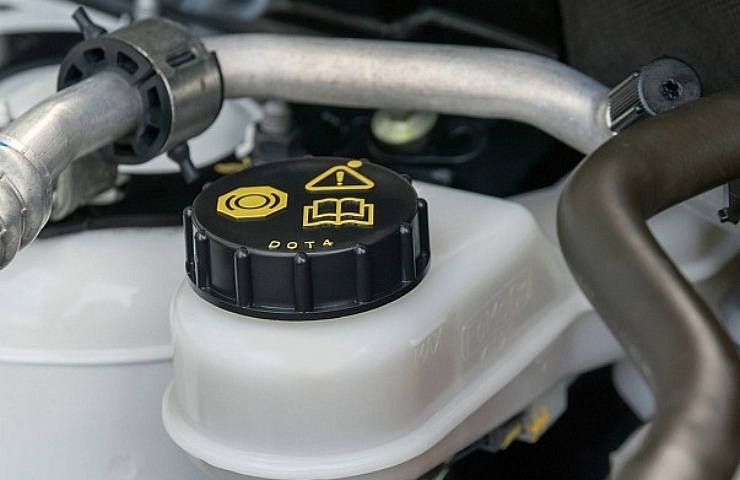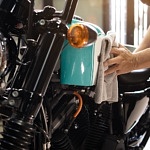Keeping your car’s brake fluid in top condition is a necessary but often overlooked maintenance task. If neglected, it can compromise safety and cost big bucks to repair. But checking your brake fluid is easy on modern vehicles.
Checking for Low Brake Fluid

Add the Right Fluid for Your Car
If you need to add brake fluid, use the type specified in your owner’s manual. There are three specifications for brake fluid—DOT 3, DOT 4, and DOT 5.
A few cautions:
- Make sure you only use the type designated for your car. Different types should not be mixed.
- Brake fluid is hygroscopic, which means it can attract and hold water, which in turn can corrode brake system components.
- Brake fluid is highly corrosive to painted surfaces. Place a rag near the fill tank to avoid spills. Use a clean rag to immediately wipe off any brake fluid that gets on paint.
When Should You Check Your Brake Fluid?
So how do you know when it is time to change your brake fluid? Most manufacturers have a recommended time interval to change your brake fluid, usually every two years. But there are better ways to gauge if your brake fluid is still okay after two years.
Check Your Brake Fluid Color
Fresh brake fluid is clear to slightly yellow. If your brake fluid is brown or black, it’s a solid indication that it might need changing. Further testing will confirm that.
Use a Brake Fluid Test Strip
These affordable strips determine if copper is in the brake fluid and indicates the ongoing ability to inhibit corrosion. They will quickly tell you if your brake fluid is still serviceable or if it needs to be changed.
Shop now for brake fluid test stripsCheck the Moisture Content of Your Brake Fluid

Brake fluid refractometer
An optical refractometer can determine how much water is present in your brake system. Since brake fluid absorbs moisture over time, it gets diluted, reducing its effectiveness. This can lead to corroded brake components like brake calipers and brake lines. Also, seals can degrade.
Shop now for brake fluid refractometers
Excessive water in the brake fluid causes the boiling point of the liquid to drop drastically, resulting in possible brake failure. A spongy brake pedal indicates water that has boiled and become a gas in a brake system.
After two years of standard driving, a car’s brake system can absorb 5 percent of its volume in water.
See Brake Fluid Can for sale on eBay.







